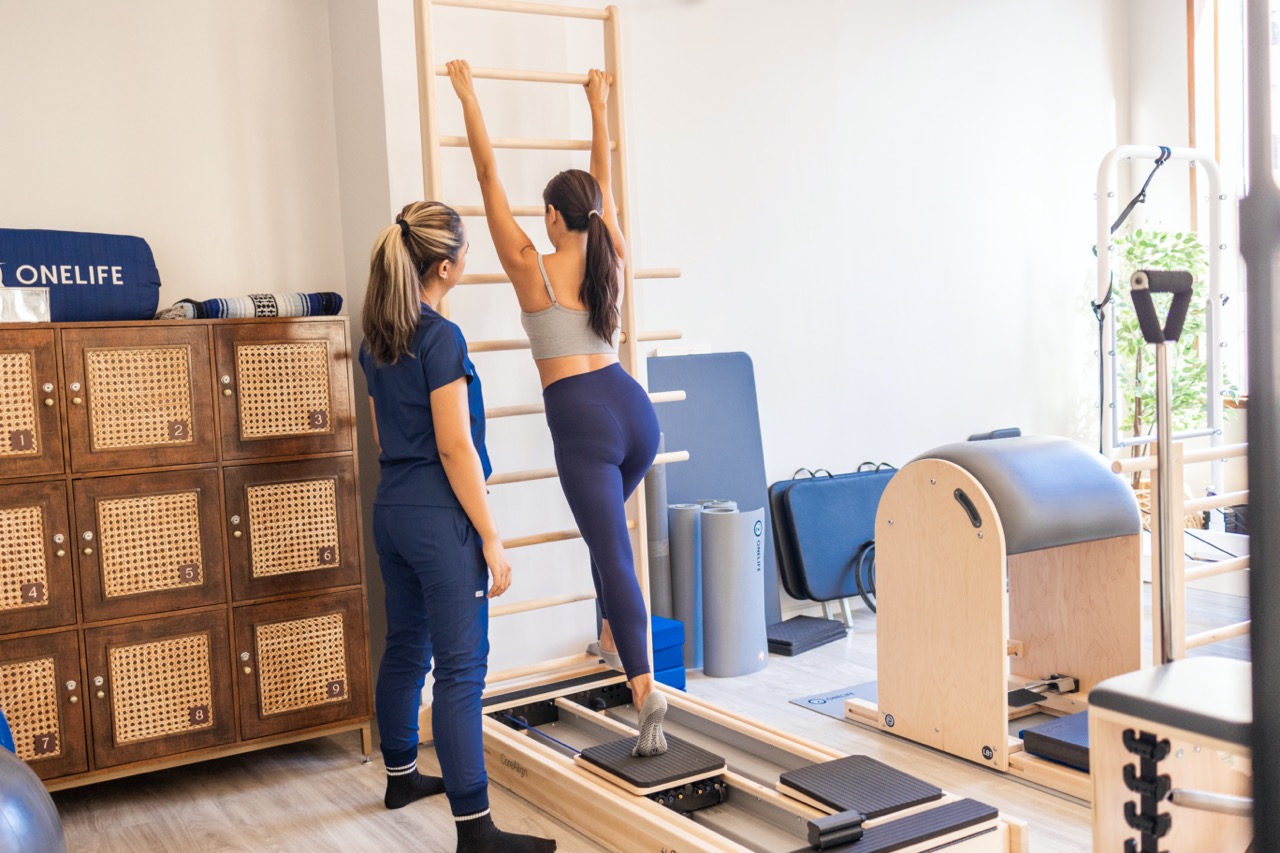More than just building a toned physique, Pilates training helps improve posture, balance, and coordination—indispensable points for anyone who wants to enrich their health
Pilates is one of the workouts I have always been curious about but found myself intimidated by. I’ve admired how those who practice it seem to have such strong and toned physiques, and the main point of my intimidation was whether I’d be physically capable of doing the (complex!) moves and forms I’d often see as depictions of this training method.
While many may associate Pilates with natal fitness and even injury rehabilitation, it is actually a great holistic physical fitness training.
And when I finally got the chance to try a session out for myself, I discovered a few things about this workout and myself, too.
Pilates is challenging but not impossible
The man who created Pilates—and after which this training method was named—is pretty impressive (and intimidating) himself. German Joseph Pilates was a bodybuilder, gymnast, boxer, skier, diver, self-defense instructor, and acrobat. But these physical feats all stemmed from a sickly childhood, which pushed him to strive to become strong and healthy.
This led him to learn and practice a wide variety of exercises, from both Western and Eastern health and fitness practices and ideas. While Pilates itself has evolved over the years (there are now even different types of Pilates!), its core principles, which built strength and improved physical fitness, combined with meditative principles of yoga, tai chi, and Zen, are still evident today.

When I tried my hand at Pilates at Onelife Studio, I was able to experience their brand of clinical Pilates, which involves a personalized approach to the practice. We started off with a fitness assessment, which involved body measurement through a karada body scan machine, and a brief physical exam that measured my body’s current level of strength, balance, coordination as well as posture.
The fitness assessment gives the coach (and yourself!) a baseline from which to start the training. It helps the coach identify what parts of your body need to be targeted for your specific fitness goals. I was lucky all my stats fell within what was considered a healthy range, and only needed additional work to improve my core strength and keep my fat levels in check.
As I was led to the main studio area to begin my Pilates session, the intimidation of being surrounded by complex-looking machines (which they call the Reformer) melted away, thanks to the very approachable coaches.
Unlike high-intensity workouts where it seems like each workout and each rep feels like punishment from your coach, in Pilates, you work closely with them—trusting them—to guide you through each movement. Onelife’s Pilates sessions are all one-is-to-one, so that you’re thoroughly guided.
That was the first myth I busted about Pilates. It’s challenging but not impossible to do because the coach is always there to adjust according to how your body can also respond to the movements and the machine. But they’re also good at pushing you to finish your reps!
More than the moves, it’s about achieving balance
When we think about Pilates, we probably often visualize the complex forms on the Reformer, some even involving twists and flips. But what I’ve discovered about this training is that it’s not about speeding through your reps—it’s about executing it properly—and slowly.
Breathwork is equally emphasized in Pilates, which I think adds an element of mindfulness to the practice. It’s not just about breezing through movements to feel the burn and to finish it. Focusing on your breathing as you slowly work through each movement also helps in finding balance.
In this sense, this also debunks the myth that Pilates is a fast way to tone the body. This emphasis on breathing, balance, slowness, and proper movement is all about building better body strength and improving posture. It’s also why it’s recommended to do it consistently and frequently, as it’s how you’ll see better results.
It’s a safe space to discover more about your body
With each movement targeting different areas of the body, aiming to improve posture or alignment or balance, the whole training session becomes a platform to safely (physically and psychologically) learn more about your own body.
While other workouts—even the mat variation of Pilates—can be done on your own, I’ve realized it’s more beneficial and safer done in a studio with a coach since they can provide their expertise. At Onelife Studio, they fuse the principles of Pilates with physiotherapy to ensure that training is well-rounded, efficient, and safe.
During my session, as the coach also helps me be more mindful of my form and how I execute the moves, I am also able to see how the moves are meant to target my weak points. As challenging as some of the stretches and movements were, I was able to see (thanks to the studio’s wide mirrors!) that if I were to consistently do the workouts, I’d definitely both look and feel healthier and better.

